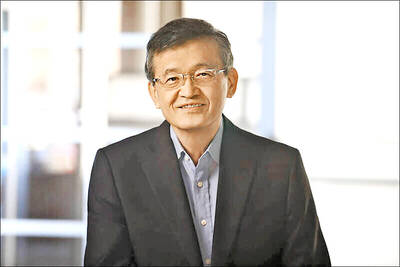Contract electronics manufacturer Pegatron Corp (和碩) yesterday said that it has begun exploring overseas expansion options to cope with escalating US-China trade tensions.
The company is to reallocate production from China to its existing sites in the Czech Republic and Mexico as it reviews its global footprints, Pegatron chief executive officer S.J. Liao (廖賜政) told an investors’ teleconference, adding that it is also considering setting up new manufacturing bases in Southeast Asia.
Although reallocating production capacity and moving equipment between the company’s locations would not require substantial capital expenditure, the change would push up management costs, Liao said.
Setting up brand new production lines in Southeast Asia would be costlier and it would take two to three years before such facilities would come online, he added.
“We will be talking with our customers about sharing the burden of additional costs,” Liao said.
US President Donald Trump’s looming tariffs on US$260 billion of Chinese-made goods are not the only reason for the company to diversify its production, Liao said, adding that the entire supply chain is challenged by labor shortages and rising wages in China.
Diversification would also help push down the cost and difficulty of gathering the required workforce during peak seasons, Liao said.
To avoid US tariffs, products made outside China must meet country-of-origin requirements, which stipulate that 30 to 35 percent of the value of an exported product must be derived locally, Pegatron chief financial officer Charles Lin (林秋炭) said.
That could be more difficult for electronics assemblers, which rely on key components from China’s well-established supply chains and industry hubs, Lin said, adding that it would take until next year for the effects of trade tensions on demand to materialize.
Lin rejected reports suggesting that Apple Inc has cut iPhone XR orders from Pegatron and other suppliers due to lower-than-expected demand, saying that the company’s strong performance last month showed that the ongoing peak season has met expectations.
Pegatron’s plants have been running at full capacity, he said.
The company reported that revenue last month rose 55.1 percent monthly and 11.7 percent annually to NT$186.02 billion (US$6.06 billion), a new monthly high.
Pegatron previously reported that net income in the third quarter rose 5.1 percent quarter-on-quarter, but dropped 31.9 percent from the same period last year due to rising component and labor costs, as well as a delayed production ramp-up.
Net income was also dragged down by NT$140 million in foreign-exchange losses, down from gains of NT$1.01 billion in the previous quarter. Earnings per share were NT$1.08.
Revenue last quarter rose 18.7 percent sequentially, but dipped 4.4 percent from the same period last year to NT$322 billion.
Gross margin inched up from 3.2 percent at the end of June to 3.3 percent at the end of September, while operating margin rose to 1.1 percent from 0.6 percent in the second quarter.

Intel Corp chief executive officer Lip-Bu Tan (陳立武) is expected to meet with Taiwanese suppliers next month in conjunction with the opening of the Computex Taipei trade show, supply chain sources said on Monday. The visit, the first for Tan to Taiwan since assuming his new post last month, would be aimed at enhancing Intel’s ties with suppliers in Taiwan as he attempts to help turn around the struggling US chipmaker, the sources said. Tan is to hold a banquet to celebrate Intel’s 40-year presence in Taiwan before Computex opens on May 20 and invite dozens of Taiwanese suppliers to exchange views

Application-specific integrated circuit designer Faraday Technology Corp (智原) yesterday said that although revenue this quarter would decline 30 percent from last quarter, it retained its full-year forecast of revenue growth of 100 percent. The company attributed the quarterly drop to a slowdown in customers’ production of chips using Faraday’s advanced packaging technology. The company is still confident about its revenue growth this year, given its strong “design-win” — or the projects it won to help customers design their chips, Faraday president Steve Wang (王國雍) told an online earnings conference. “The design-win this year is better than we expected. We believe we will win

Chizuko Kimura has become the first female sushi chef in the world to win a Michelin star, fulfilling a promise she made to her dying husband to continue his legacy. The 54-year-old Japanese chef regained the Michelin star her late husband, Shunei Kimura, won three years ago for their Sushi Shunei restaurant in Paris. For Shunei Kimura, the star was a dream come true. However, the joy was short-lived. He died from cancer just three months later in June 2022. He was 65. The following year, the restaurant in the heart of Montmartre lost its star rating. Chizuko Kimura insisted that the new star is still down

While China’s leaders use their economic and political might to fight US President Donald Trump’s trade war “to the end,” its army of social media soldiers are embarking on a more humorous campaign online. Trump’s tariff blitz has seen Washington and Beijing impose eye-watering duties on imports from the other, fanning a standoff between the economic superpowers that has sparked global recession fears and sent markets into a tailspin. Trump says his policy is a response to years of being “ripped off” by other countries and aims to bring manufacturing to the US, forcing companies to employ US workers. However, China’s online warriors